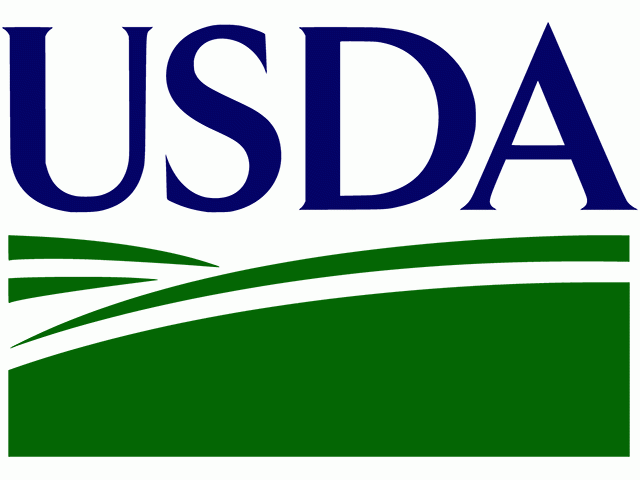USDA Reports Preview
USDA's Acreage and Grain Stocks Reports on Deck
On Friday, June 30, at 11 a.m. CDT, USDA will issue its annual Acreage report and the Grain Stocks report for June 1, a combination that may briefly turn traders' attention from the weather forecasts.
ACREAGE REPORT
Despite the boos one can generate by mentioning USDA's 91.7-million-acre corn planting estimate from 2019 to any farm audience, USDA's Acreage estimates on June 30 are actually one of their better reports, especially when weather is not a major disruptor, as the excess rain was in 2019. In 2023, the main weather obstacles to planting were cold and wet spring conditions in North Dakota and northwestern Minnesota. However, a timely stretch of warm and dry weather allowed the bulk of planting to get done, and this year's prevented plantings are expected to be minimal because of that rapid northern improvement.
Dow Jones' survey of 19 analysts expects USDA to estimate 91.81 million acres of corn plantings, 87.66 million acres of soybean plantings and 49.65 million acres of all wheat plantings. Wheat planting estimates are broken down as 37.32 million acres of winter wheat, 10.49 million acres of spring wheat and 1.77 million acres of durum. If true, USDA's June estimates will be remarkably similar to the March estimates of 92.0 million acres of corn, 87.5 million acres of soybeans and 49.9 million acres of all wheat. The spring wheat planting estimate of 10.49 million acres, if correct, is the lowest since 1972.
P[L1] D[0x0] M[300x250] OOP[F] ADUNIT[] T[]
The big three-crop total of 229.1 million acres in Dow Jones' estimates will be the most in nine years, and I find that suspiciously high. Last year's planting total of 221.80 million acres was held down by 5.3 million acres of prevented plantings. This year's prevented total should be less, but I don't expect a net gain of 7.3 million plantings in 2023. USDA has not yet announced changes in Conservation Reserve Program (CRP) in 2023, but it looks like less than 1 million acres will be added to the total available for planting (see more in this June report from DTN Political Correspondent Jerry Hagstrom at https://www.dtnpf.com/…).
For those reasons, I expect Friday's Acreage report to show 90 million planted acres of corn, 87 million acres of soybeans and 49.5 million acres of wheat. It's the harvested acre totals that will be most at risk this year. In the southwestern Plains, we have already seen several reports of wheat acres abandoned to drought. With corn and soybeans sporting their lowest good-to-excellent ratings since 1988 this week, it is fair to wonder how many areas will miss out on rain and lose harvested acres this fall. Once again, weather dominates the discussion and is the main reason traders won't spend too much time on Friday's numbers.
JUNE 1 GRAIN STOCKS
Quite often, USDA's grain stocks reports go unnoticed and are largely untraded the day of the report. For this analyst, the grain stocks reports are among USDA's most important functions and are the one source of check and balance that the grain markets have to keep all the other estimates close to something honest. For corn, Dow Jones' survey expects USDA to find 4.261 billion bushels (bb) of stocks on hand as of June 1, the second-lowest total for June 1 in nine years. However, USDA is estimating 2022-23 will have the highest ending corn stocks in three years, so don't be surprised if June 1 corn stocks come in higher than expected. Corn prices enjoyed a strong national basis up until the first of June, and the basis has weakened dramatically since.
For soybeans, Dow Jones' survey expects USDA to find 808 million bushels (mb) of stocks on hand as of June 1, the second-lowest total for June 1 in eight years. That compares closely to an ending stocks estimate that is the lowest in seven years. There are some recent bullish hints, however, which include sharply higher cash soybean prices in June and an 87-cent premium in the August contract over the September. If soybean stocks come in significantly tighter than expected, traders are apt to respond.
For wheat, Dow Jones expects USDA to find 611 mb of stocks on hand as of June 1, a total that will also serve as ending wheat stocks for 2022-23. That is 13 mb above USDA's current ending stocks estimate of 598 mb for U.S. wheat, but not an unreasonable guess as wheat exports struggled throughout the entire season. Ending stocks of 611 mb, if true, will be the lowest in nine years, a second season of limited production and low demand.
**
Register now to join us Friday for DTN's 12:30 p.m. CDT webinar. We will discuss USDA's latest numbers and what they mean to markets. Given the history of the June 30 reports and the volatile price situation already at hand, big price moves may also be a part of the day's conversation. Register now at: https://ag.dtn.com/….
| QUARTERLY STOCKS (million bushels) | ||||||
| 6/1/23 | Avg | High | Low | 6/1/22 | 3/1/23 | |
| Corn | 4,261 | 4,410 | 4,086 | 4,349 | 7,401 | |
| Soybeans | 808 | 920 | 750 | 968 | 1,685 | |
| Wheat | 611 | 690 | 588 | 698 | 946 | |
| ACREAGE (million acres) | USDA | USDA | ||||
| 6/30/23 | Average | High | Low | 3/30/23 | 2022 | |
| Corn | 91.81 | 92.50 | 91.00 | 92.00 | 88.58 | |
| Soybeans | 87.66 | 88.50 | 87.20 | 87.51 | 87.45 | |
| All Wheat | 49.65 | 50.10 | 48.60 | 49.86 | 45.74 | |
| Winter | 37.32 | 37.80 | 36.70 | 37.51 | 33.27 | |
| Spring | 10.49 | 10.80 | 10.10 | 10.57 | 10.84 | |
| Durum | 1.77 | 1.90 | 1.70 | 1.78 | 1.63 | |
Todd Hultman can be reached at todd.hultman@dtn.com
Follow Todd Hultman on Twitter @ToddHultman1
(c) Copyright 2023 DTN, LLC. All rights reserved.




